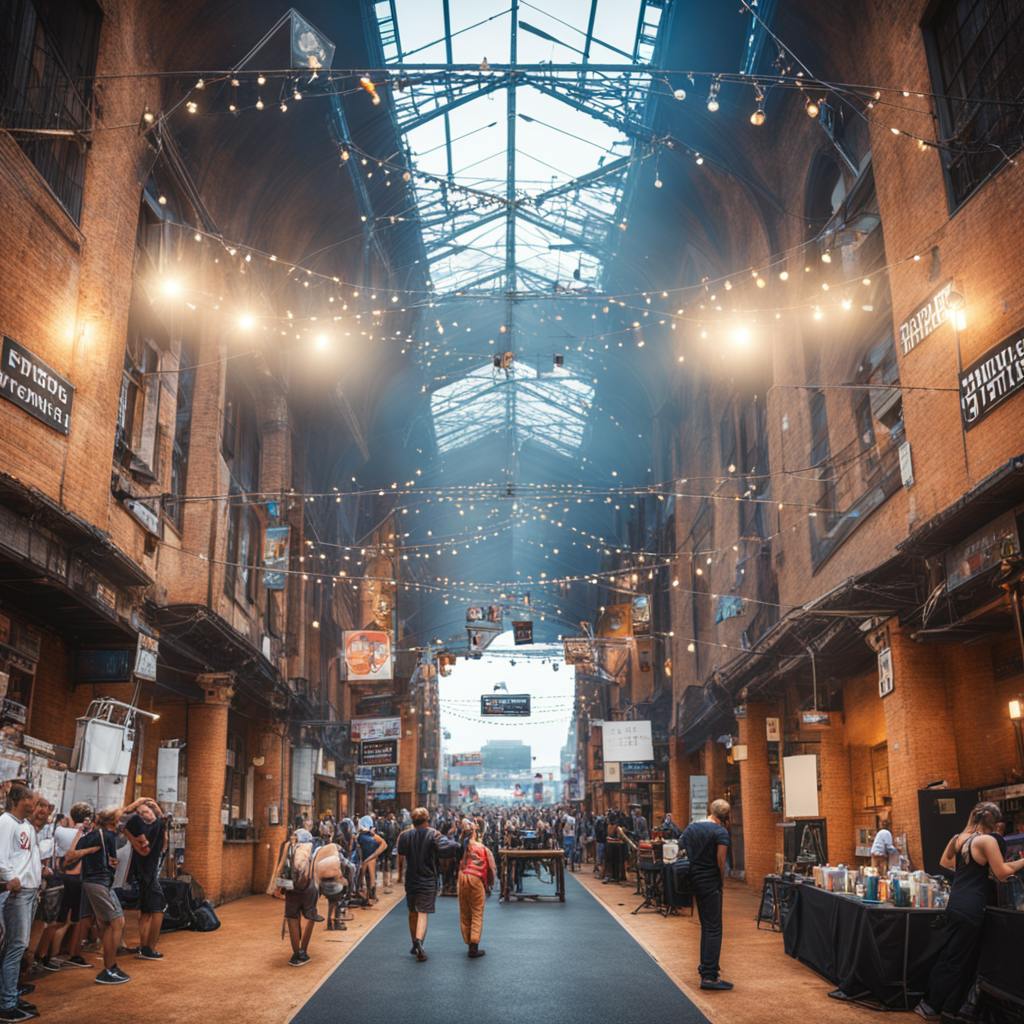In today's rapidly evolving digital landscape, user experience (UX) jobs are at the forefront of creating seamless and intuitive interfaces. From user experience (UX) designer roles to UX research positions, the demand for professionals in this field is surging. This explosion in user experience (UX) jobs is not just a response to user demands but also a proactive evolution driven by advancements in Artificial Intelligence (AI). In this article, we'll delve into how AI is revolutionizing user experience in the digital sphere.
Clear
AI-Powered User Research
One of the key areas where AI is making a significant impact is user research. Traditionally, user experience research jobs involved manually gathering and analyzing user data—a time-consuming process. Today, AI-powered tools can analyze vast datasets rapidly, identifying patterns and insights that inform design decisions. AI algorithms can process feedback, behavioral data, and user interactions to provide a comprehensive understanding of user needs and preferences.
Concise
Enhanced Design Prototyping
AI isn't only transforming research; it's revolutionizing the design process as well. With the advent of AI-driven design tools, creating design prototypes has become more intuitive and efficient. For instance, AI can predict design outcomes, suggest improvements, or even automatically generate design elements based on historical data. This allows user experience design jobs to focus more on creativity and less on repetitive tasks.
Compelling
Personalization at Scale
AI is also enabling unprecedented levels of personalization. User experience (UX) jobs at companies like Google are increasingly leveraging AI to tailor experiences for individual users. By analyzing user behavior and preferences, AI can customize content, interface layouts, and functionalities, ensuring a more personalized and engaging user journey. This individualized approach not only enhances user satisfaction but significantly boosts user retention rates.
Credible
AI in Usability Testing
Usability testing, another cornerstone of user experience (UX) jobs, has also been impacted by AI. Traditionally, this involved direct user observation and time-consuming manual analysis. AI now facilitates automated usability testing tools that can simulate user interactions and provide detailed reports on potential usability issues. This not only speeds up the testing phase but also improves the accuracy and depth of insights.

AI made with Dean Jones
Frequently Asked Questions (FAQs)
How is AI benefiting user experience (UX) jobs?
AI is enhancing UX jobs by automating data analysis, improving design prototyping, enabling personalized experiences, and facilitating more efficient usability testing.
What specific user experience (UX) jobs are most affected by AI?
User experience research jobs, user experience design jobs, and usability testing roles are some of the positions most significantly impacted by AI.
How do companies like Google utilize AI in UX?
Companies like Google utilize AI to analyze user behavior, personalize user interactions, and streamline the design and testing processes.
What skills should aspiring UX professionals focus on in an AI-driven job market?
Aspiring UX professionals should focus on skills like data analysis, familiarity with AI-driven design tools, and a deep understanding of user-centered design principles.
FAQ: The Role of AI in User Experience (UX) Jobs
How is AI redefining user experience in the digital arena?
AI is increasingly shaping digital experiences by making them more personalized, intuitive, and efficient. Traditional user experience design has always focused on creating interfaces that are user-friendly and engaging. AI elevates this by leveraging machine learning algorithms, natural language processing, and data analytics to anticipate user needs and adapt in real-time. Through AI, applications can deliver personalized content, predict user actions, and constantly optimize interfaces for better usability.
Instead of a one-size-fits-all approach, AI enables dynamic alterations to user interfaces, based on real-time data and individual user behavior. This results in more effective and satisfactory digital interactions that can significantly boost user retention and engagement.
What are the job opportunities in user experience (UX) augmented by AI?
The intersection of AI and UX is creating a wealth of job opportunities. Here are some of the primary roles:
- AI-based UX Designer: Focuses on integrating AI components into the user experience, ensuring the systems interact intuitively with users.
- Data Analyst for UX: Utilizes data analytics to inform UX design, often working closely with AI algorithms to interpret user behavior and improve design decisions.
- Conversation Designer: Specializes in creating user-friendly and intuitive interfaces for chatbots and voice assistants.
- UX Researcher with AI Expertise: Conducts user research to gather insights, which can be fed into AI systems to train models that better understand user needs.
- Product Designer with AI Integration: Focuses on how AI can be integrated seamlessly into product designs, enhancing the overall user experience.
- Human-Computer Interaction Specialist: Works on optimizing the interaction between users and AI-powered systems, ensuring minimal friction and enhancing usability.

AI made with Dean Jones
How does knowledge of AI benefit professionals in user experience (UX) jobs?
Understanding AI provides UX professionals with valuable tools and insights to enhance their work. Here are several benefits:
- Personalization: Knowledge of AI allows UX professionals to design personalized experiences, where interfaces adapt to individual users based on their behavior and preferences.
- Efficiency: AI can automate repetitive tasks such as A/B testing, user feedback analysis, and more, allowing UX designers to focus on more creative and high-impact tasks.
- Predictive Analytics: By leveraging AI-driven predictive analytics, UX professionals can anticipate user needs and behaviors, leading to more proactive design solutions.
- User Research: AI speeds up the process of user research by quickly analyzing vast amounts of data to extract meaningful insights.
- Innovation: Familiarity with AI opens up new avenues for innovation, allowing UX professionals to explore and implement cutting-edge technology in their designs.
How is AI integrated into traditional user experience (UX) jobs to enhance digital platforms?
AI is seamlessly woven into traditional UX roles to offer advanced capabilities. Here’s how:
- Enhanced User Testing: AI tools can simulate user interactions to test usability and find pain points faster.
- Real-Time Data Analysis: AI helps in gathering and analyzing user data in real-time, providing immediate feedback that can be used to make quick adjustments to designs.
- Voice and Chat Interfaces: Designers adapt to creating user-friendly experiences for AI-driven voice assistants and chatbots, enriching interaction models beyond traditional GUI.
- Adaptive Interfaces: AI drives adaptive interfaces that change elements based on user behavior, ensuring a more dynamic and responsive user experience.
- Content Recommendations: AI algorithms can curate content, ensuring users receive personalized recommendations, increasing engagement and satisfaction.
- Accessibility Improvements: AI tools aid in making digital platforms more accessible by understanding and adapting to users' unique needs, like real-time text-to-speech conversion, or adaptive font sizes and colors.
Integrating AI into UX practices fosters a more holistic approach to user-centered design, ensuring that digital platforms not only meet but exceed user expectations.
As AI continues to evolve, its symbiosis with UX will undoubtedly lead to more intuitive, intelligent, and personalized digital experiences, carving out a myriad of new career opportunities and enhancing the skill sets required for UX professionals.
AI is undeniably shaping the future of user experience in the digital arena. From streamlining user research to enhancing design prototyping and personalizing user interactions, AI is revolutionizing how we approach user experience. As the digital landscape continues to evolve, user experience (UX) jobs will undoubtedly continue to adapt, integrate, and innovate with AI at their core. For professionals in the field, staying informed and adept with AI technologies is crucial to driving and sustaining this transformative progress.

